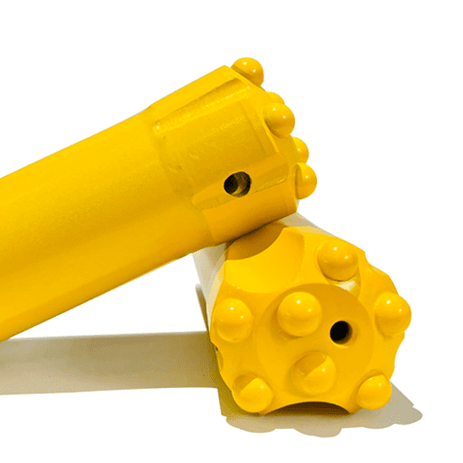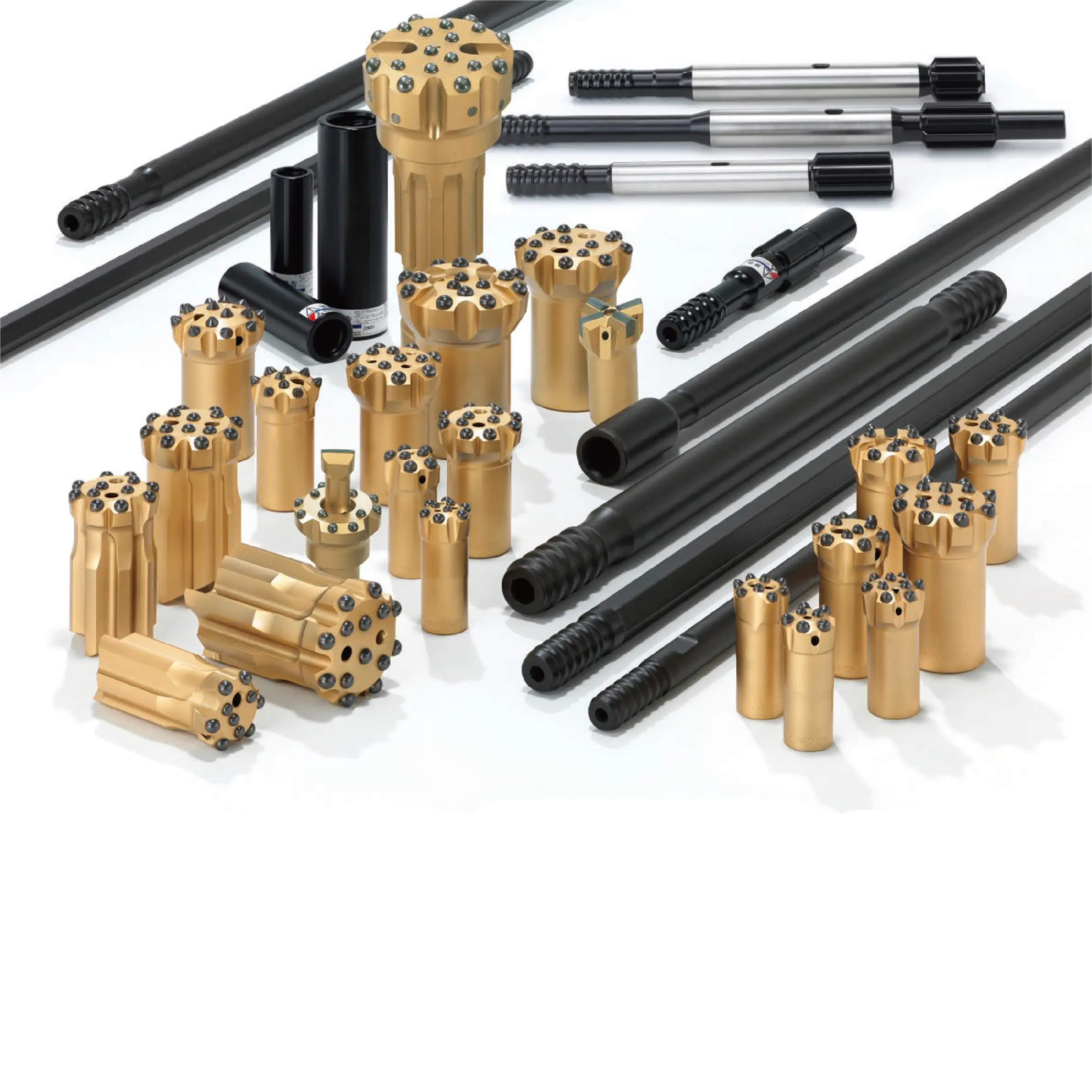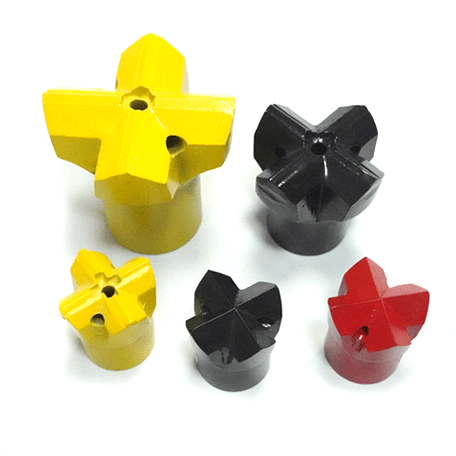Selecting the correct drill bit for the job is essential for efficient and safe drilling. This comprehensive guide explores various drill bit types, their uses, and what to consider when choosing the right drill bit. Whether you are working with wood, metal, concrete, or tile, understanding the differences between drill bit options will improve your project's success and prevent damage to your tools and materials. We will explain how different drill bits work and help you choose the best for each application.
1. What is a Drill Bit and Why Are There So Many Types?
A drill bit is a cutting tool used to create a drill hole in a variety of materials. Essentially, it’s the working end of a drill. The wide array of drill bit types exists because different materials require different cutting actions and drill speeds. The design of a drill bit, including its shape, material, and cutting edges, directly affects its ability to drill effectively through specific materials. For example, a drill bit designed for wood is very different from one designed for masonry. The vast selection of drill bits available ensures that there is a specialized bit for almost any task.
The primary purpose of a drill bit is to remove material and form a hole. This is achieved through a combination of rotation and pressure. The bit itself must be durable enough to withstand the stresses of cutting while also maintaining the correct shape and cutting edges. The variety of different types of drill bits helps to optimize drilling efficiency and quality, as using the right type of drill bit for the type of material makes the process safer and faster. The unique challenges each material presents explain why there are many types of drill bits.
2. What are the Common Drill Bit Materials and Finishes?
The materials from which drill bits are made significantly impact their performance and durability. HSS drill bits, or High-Speed Steel, are a common type of drill bit used for general-purpose drilling in wood, metal, and plastic. These are affordable and widely available. Cobalt drill bits contain cobalt, making them much harder and more heat-resistant. They are better suited for drilling through tougher metals, like stainless steel and are considered some of the best drill bits for metal. The composition of the material is critical to the performance of the bit.
Other less common materials include carbide, which is extremely hard and used in bits that require extra durability, and carbon steel, which is more suited for softer materials. Finishes also play a role. Black oxide finishes prevent rust, while titanium coatings reduce friction and increase bit life. The choice of material and finish depends on the demands of the drilling task. Drill bit materials and finishes affect the longevity and effectiveness of a drill bit.

3. The Versatile Twist Drill Bit: A Common Type for Many Applications
The twist drill bit is perhaps the most recognizable and common type of drill bit. Characterized by its helical flutes that run along its length, the twist drill bit is extremely versatile. It can be used to drill holes in a variety of materials, including wood, metal, and plastic, making it a staple in most bit sets. The flutes are designed to remove the material being cut. The twist drill bit is versatile and efficient for many drill applications.
The design of the twist drill bit includes a cutting edge at the tip and flutes to carry away chips. They are available in different drill bit sizes and are typically made from HSS bits. A type of twist drill bit can be used for everything from basic woodworking to drilling pilot holes in metal. Its straightforward design and ease of use make it a standard choice for both beginners and professionals. For drilling into wood, a twist drill bit with a brad point will provide a cleaner, more accurate hole. The basic design of the twist drill bit makes it extremely popular.
4. Masonry Drill Bits: How Do They Differ from Standard Drill Bits?
Masonry drill bits are specifically designed to drill through hard, brittle materials like concrete, brick, and stone, which a standard drill bit cannot handle. These drill bits are used with a hammer drill, and they feature a hard carbide tip that can withstand the impact of the hammering action. Unlike the sharp cutting edges of a twist drill bit, a masonry bit uses a dull cutting edge with a hammering action. These bits are made to withstand the high impact forces.
The carbide tip on a masonry drill bit is crucial for its performance. It is typically brazed onto the steel shank, and this hard tip is what breaks away the material while the flutes remove the debris. When using a masonry drill bit, the drill action is a combination of rotation and impact force. Masonry bits are often used to install anchors and fasteners in walls and foundations. A masonry drill bit is essential when you need to drill into materials such as concrete or brick, using the proper drill is crucial.
5. Understanding the Step Drill Bit: When to Choose This Type of Drill Bit?
A step drill bit, also known as a stepped drill bit, is characterized by its conical shape with multiple steps of increasing diameter. This unique design allows a single bit to drill multiple hole sizes in sheet metal and other thin materials. Step drill bits are particularly useful for drilling in tight spaces or when multiple hole sizes are needed without changing the bit. They excel in thin metal and plastic applications.
Instead of cutting a hole with a single motion, a step drill bit progressively enlarges the drill hole as it is advanced. The conical shape of the step drill makes it easier to drill angled holes without slipping. They are particularly useful in electrical and plumbing work when installing conduit boxes or when the project involves sheet metal. A step drill bit offers speed, convenience, and accuracy for specific tasks.
6. What is a Spade Drill Bit and When Should It Be Used?
A spade drill bit, sometimes called a paddle bit, is designed for drilling large diameter holes in wood. It features a flat blade with a sharpened point in the center. The design allows the spade drill bit to quickly remove wood from the drill hole, making it ideal for rough and quick drilling. However, the spade bit is not precise and may cause splintering. They are typically used for projects like running wires through studs or making large holes.
The center point of the spade bit is meant to position the bit accurately before the cutting edges engage the wood. Spade bits are available in a variety of bit sizes to accommodate different hole diameters. While they are efficient for quickly making large holes, they are not recommended for precise work. A spade drill bit is a good choice when speed and larger diameter holes are more important than accuracy and a clean finish. The bit cuts through wood with ease, but it might not be the best choice for fine woodworking.
7. When is an Auger Drill Bit The Right Choice?
An auger bit is a specialized drill bit designed for drilling deep and wide holes in wood, specifically with a hand crank or hand drill. The design of an auger bit features a screw-like tip that helps to position the bit and pulls the bit into the wood as you turn the drill. It has a deep flute to remove the wood chips efficiently. This design allows you to create very deep and clean holes.
These drill bits are often used in carpentry and timber framing. The screw-like tip helps to align the bit and prevent it from wandering, while the deep flutes efficiently remove material. An auger bit is ideal when you need to drill deep into wood, such as for mortise joints or running wires. This is a bit designed for woodworking and provides a very clean and deep cut.

8. Core Drill Bits: What Are They and When Are They Needed?
A core drill bit is used to create a large diameter hole without removing the material from the center of the hole. This type of bit that cuts a circular path, leaving a core or plug of material in the center. This makes the core drill bit useful for creating holes for pipes or electrical conduits and other applications where a core of material needs to be removed as a single unit. These drill bits are often used in construction.
Core drill bits typically have a diamond or carbide cutting edge, making them very durable and suitable for cutting into tough materials such as concrete and tile. They are commonly used with a hammer drill to help break up material for efficient removal. The result is a clean, round hole with a precisely cut diameter. When drilling through thick materials such as concrete, they are among the best choices, due to the way the bit cuts around, rather than through the material.
9. How Does a Tile Drill Bit Work?
A tile drill bit is specifically designed to drill through ceramic and porcelain tile without cracking or chipping the material. These bits are designed to have a spear-shaped carbide tip that scores the surface of the tile, preventing the bit from wandering. The design of a tile drill bit focuses on precision. It allows you to create the clean and accurate holes needed for installing fixtures.
These bits are the most common choice for installing fixtures and accessories in bathrooms and kitchens. When drilling into tile, it's important to go slowly and steadily, using gentle pressure, to avoid cracking the tile. Using water can also help keep the bit cool and reduce the chances of damaging the tile. A tile drill bit will help you make clean holes without damaging the tile itself.
10. Drill Bit Maintenance and Care: How to Maintain Your Drill and Bits
Proper maintenance is crucial to ensure your drill bits perform optimally and last longer. Regularly clean your bits using a wire brush to remove any debris and build-up. For longer-term storage, it’s wise to protect them from moisture and rust, using a light coat of oil. Always store your drill bits in a bit set or case to prevent damage. It's important to inspect your bits before each use for any signs of wear or damage. Dull bits will require more effort, making the job more difficult.
Keeping your drill in good working order is also vital. Check for loose screws and ensure the chuck is securely holding the bit. Over time, the chuck can loosen. If you notice that the bit is slipping or not spinning correctly, it might be time for maintenance or replacement. With proper maintenance, your drill and drill bit set will last longer and perform better, allowing you to drill more efficiently. You should always maintain your drill, as it is essential for using the drill bits effectively. It’s also a good practice to never force a drill bit; let you drill bit do the work, and when you notice the bit is getting hot, pull the bit back out.
Key Takeaways:
- The right drill bit depends on the type of material you are working with.
- Twist drill bits are versatile for general-purpose use.
- Masonry drill bits are needed for concrete, brick, and stone.
- Step drill bits create multiple hole sizes in thin materials.
- Spade drill bits are best for quickly making large holes in wood.
- Auger bits are ideal for deep, wide holes in wood.
- Core drill bits create large-diameter holes while leaving a core.
- Tile drill bits prevent cracking when drilling through ceramic and porcelain.
- Regular maintenance is essential for drill bit performance and longevity.
- Choosing the right drill bit is important for safety and efficient drilling.
For high-quality drill bits and other drilling equipment, be sure to check out our selection of self-drilling hollow anchor systems and our range of tapered drill pipe. We offer a wide variety of tools to meet your construction and mining needs, including rock drilling bits.

Post time: 1 月-22-2025














